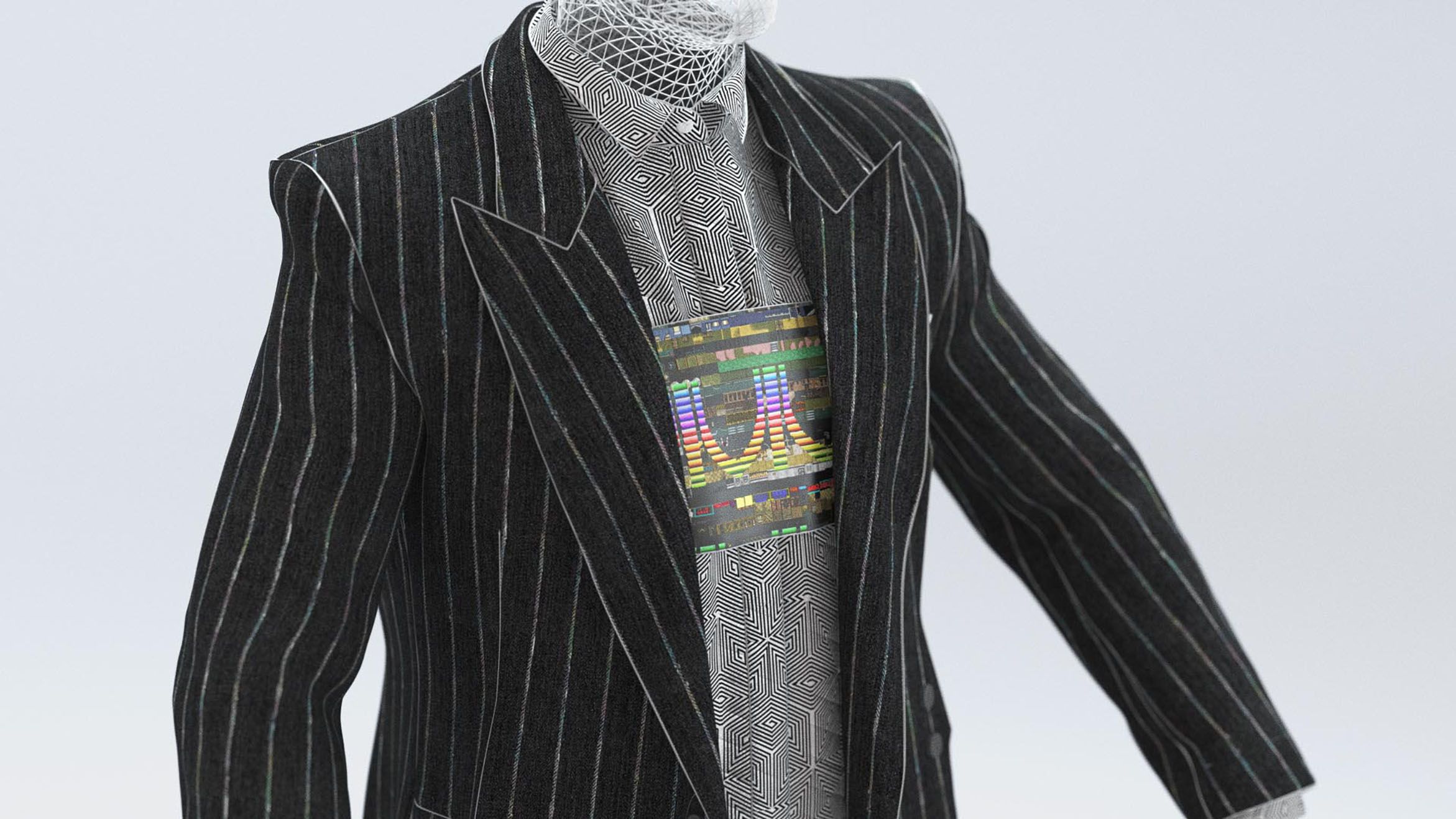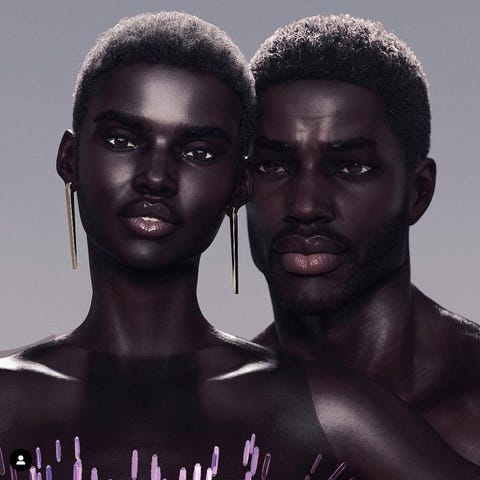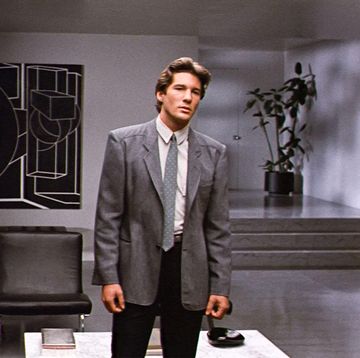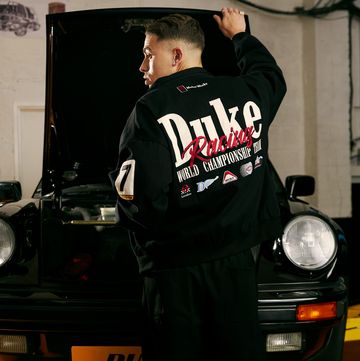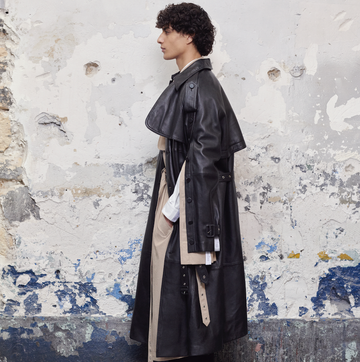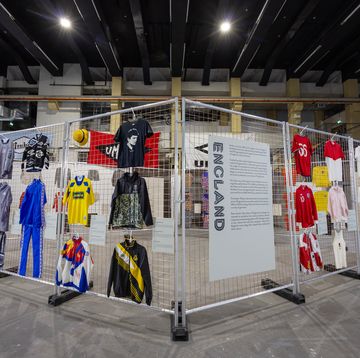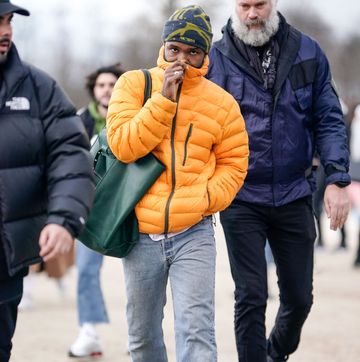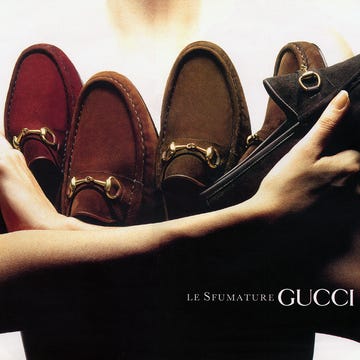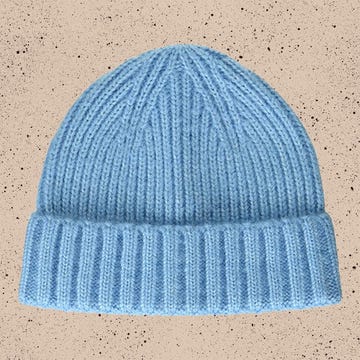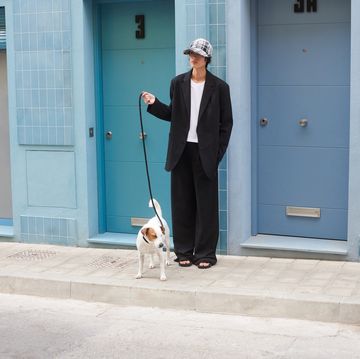It is an intriguing dress, if you can call it that. It could be a cape, or maybe a poncho. Light reflects from its surface, a shimmering, translucent silver with oil-slick pinks and golds seemingly woven into the fabric. Named “Iridescence” it was designed by The Fabricant, a recently founded Dutch fashion house. In May this year, it was bought by a Canadian tech executive called Richard Ma for £7,800 at auction. A gift for his wife, Rachel.
Rather than being made from lace, silk, cotton, polyester or any other fabric, natural or synthetic, it is a dress formed out of pixels. A computer-generated garment that is superimposed onto a photograph of its “wearer”. If its creators and a growing band of designers, consumers and professional forward-thinkers are to be believed, digital clothing might just be the future of the fashion industry.
The Fabricant’s HQ occupies a small corner at the back of an airy work space in Amsterdam, sited just off the canals and the city’s well-to-do townhouses and designer bakeries. A small dog of the “doodle” sub-species pads contentedly around the office, which has all the trappings of 21st-century productivity: exposed brick, tall green plants, stainless steel, glass, mid-century furniture and good coffee. There is a picture of a baby orangutan placed against a window, which looks out onto a wet and dreary afternoon. The beginnings of a 3D design of a man wearing a shirt and tie, a “secret project for a big British brand” according to The Fabricant’s founder, Kerry Murphy, hangs in grey digital perpetuity on a Mac screen.
“Here’s a line for you,” says Murphy as we sit at a conference table inside a glass meeting room, a glint of hyperbole dancing in his dark eyes, an ad man in his not-so-distant past. “I truly believe we are going to be the first billion-dollar digital fashion company. How’s that?”
Perfect, I say.
Murphy is, contrary to my initial email correspondence ignorance, not an Irish woman, but a Finnish man: stocky and dark-haired with a certain moody leading man quality and a Scandinavian sense of purpose. The brand’s co-founder/creative director is Amber Slooten, a measured 26-year-old. She was the first student designer in the history of the Amsterdam Fashion Institute to show her final collection as a purely digital prospect — the clothes and models entirely 3D-generated — rather than the typical physical presentation. “My tutors didn’t even know what questions to ask me about it,” she says.
“Digital fashion presents similar problems to physical, which surprises people,” adds Slooten. “Drape and fit are just as key on a 3D model and you run into challenges with how something fits on a certain part of the body. How it hangs off a shoulder or falls at the leg, for instance."
The pair launched The Fabricant in 2018 and it is, Murphy says, already profitable. The more pragmatic wing of its business involves projects like creating 3D designs for brands, including Tommy Hilfiger, that might be used internally as a digital archive or a reference point for designers making physical clothes. In the near-future, this type of work could also be used to streamline the time-consuming and waste-heavy
sampling process, where expensive physical prototypes of clothes are made and discarded.
A model has a 3D body scan before Slooten, or someone like her, designs clothes to fit that digital representation with perfect accuracy. “I can make 100 samples and change fit and fabric easily,” she says. The finished result can then be sent straight to a factory for production. “We are educating these brands about what the future looks like.” Soon they hope to be collaborating with a luxury label on its first fully digital collection. “Once they’re ready to take the risk,” says Murphy.
“I think that when you compare it [“Iridescence”] to brands like Prada, or to unique art pieces, the price is in the same ballpark,” says Richard Ma, purchaser of the dress when I reach him at home in Toronto. “It is a first of its kind and represents a new wave that is just emerging. Just like the unique firsts in the art world — for example, a Duchamp or Jackson Pollock piece — by definition it’s not well understood when it’s originally released.”
“Iridescence” and The Fabricant’s other special projects represent the more daring part of its business model. As 3D scanning becomes more accessible, design and virtual reality technology become more sophisticated and our physical lives become increasingly intertwined with our digital selves, they are asking: how might we want to dress and present ourselves online in the blurred lines of the future? How will that look in 10 years? How about 100?
“The iPhone has only been out for, what, 10 years?” says Murphy. “Now it’s an extension of our limbs. Our lives are becoming more, not less, virtual, especially as Gen Z comes of age.”
“We already experience digital emotions,” adds Slooten. “How do you feel when a WhatsApp message comes through? It’s a physical response to a digital experience. It makes sense that we’ll attach those same feelings to digital clothes. How would you want to dress on social media if you could wear anything, with no physical restrictions? Why would that not give you a physical response?”
“This is it,” says Murphy. “There is no way back.”
Despite its dystopian undertones, elements of digital clothing are already well-established in many parts of the online world, something luxury brands are increasingly paying attention to. In August this year, Moschino partnered with The Sims, the original virtual escape-from-
mundanity-by-escaping-into-mundanity simulator. Players can buy both a virtual clothing pack for £9.99, or the slightly more costly physical equivalents. The £370 hoodie and £170 T-shirt are both sold out on the Italian brand’s website.
Epic Games, creators of Fortnite, is, according to a report in The Business of Fashion, making more than £250m a month on skins (alternative outfits for players’ characters to wear). Nike is just one of the brands to release exclusive digital kit for people to buy with real cash. It has been offering virtual football boots to players of the Fifa series for years.
In 2020, Selfridges, a 110-year-old bricks-and-mortar retail institution, is debuting “The New Order” which will involve its shopfronts and retail spaces being taken over by digital designers and 3D clothing. “Our new digital tools are causing a revolution in what fashion looks like, and what it can do for us,” says the store’s head of creative direction, Emma Kidd.
In 2018, Parisian house Balmain ran a global advertising campaign fronted by an “army” of digital supermodels, created by British photographer and artist Cameron-James Wilson. His most famous creation, Shudu, an immaculate digital model that will send you fairly deeply into the uncanny valley, has 187,000 followers on Instagram.
Wilson created her as “a bit of an art project on the side,” he tells me. “I think people connected to the ambiguity around her, it was something suddenly different. ‘Is it real? Is it not?’” He has since created a model agency for his digital creations, such is the demand for his work.
“Something like $50bn has been spent on digital fashion over the last two years and it isn’t even an ‘industry’ in a real sense,” says Moin Roberts-Islam, technology development manager at the Fashion Innovation Agency, an independent arm of the London College of Fashion that works with brands and the industry on new tech in fashion. “That’s $50bn on a market that has not been defined. It’s crazy!”
We’re sitting in his office on LCF’s third floor, a distinctly tech-free affair aside from a shiny MacBook Pro on the table. August rain falls on Oxford Street outside, drenching trendy students as they scatter for shelter. “We already have video calls and it really won’t be long before we have virtual calls,” Roberts-
Islam says. “You could be at home in your pants, but to the person you’re speaking with you’re wearing a tailored suit and you look immaculate. This really isn’t that far away. The headsets are getting better and better. Or your phone will be able to augment it. There will absolutely be digital-only collections and digital runways soon. The technology is there, it just depends who wants to take the risk first.
“Once there’s a platform, a mechanism, where you can buy your digital Nike trainers and wear them in Fortnite, then on a virtual call and on social media, that will really change things,” he says. “The barriers are really blurring. Who we are, for many people, is very much linked to social media now. We all have a digital persona. In the future, I think, physical touch and real-world experiences will become a valuable commodity. It’s scary, it’s exciting.”
He laughs and shakes his head, letting the proposition hang in the air for a moment. “It’s going to be interesting, isn’t it?”
Virtual reality was meant to change the world, and then it didn’t. Clunky, cumbersome, expensive and ridiculous-looking, machines like the Oculus Rift and, in particular, the much-hyped and then much-derided Google Glass (“Glasshole” was a popular insult in tech circles at the time of its release), proved that consumers weren’t quite ready to step fully into the sci-fi fantasies of Silicon Valley CEOs. Not to be deterred, companies like Google instead began to market wearable tech towards businesses and factories: they have proven popular with workers on assembly lines. Apple is now rumoured to be working on its own “mixed reality” headset, to be released in 2020.
“The VR and AR communities are developing advanced 3D technologies and services supporting human form-scanning capable of being delivered via real-time digital data or video streaming,” says Professor Bob Stone, director of the human interface team at Birmingham University. A VR expert, Stone established the first industrial VR team at the UK’s National Advanced Robotics Centre and has won multiple awards for his work in the field. “Users can experience realistic human representations for a range of applications, including remote meetings, fashion retail experiences, even virtual catwalks.”
Despite these progressions, even if the future does hold the potential for fully holographic worlds of pants-only conference calls, it seems like our base desires for smell, touch, feel and skepticism might slow things down a bit.
“Delivering a credible sense of touch — something some might argue is absolutely essential when assessing fabric quality or garment weight and wearability — is still many, many years away,” says Stone. “Current ‘haptic feedback’ products are cumbersome to wear, expensive and very limited in terms of the sensations they deliver.
“A synthetic world where we are free to explore and experience everything we can in the real world; a world where we can adopt the persona and lifestyle of almost anyone in history,” says Stone. “We are many, many decades from such a reality, but, if the past decade is anything to go by, the near-term future will play host to some very exciting, even quite scary, technologies that will change the way we behave as individuals and interact as a society.”
In Amsterdam, my morning at The Fabricant is winding to a close. Murphy has a call with a client and Slooten is back at her Mac, cycling through fabrics that have been created via machine learning: a computer programme that works autonomously. Colourful patterns, not dissimilar to a modern Dries van Noten collection or old school Sixties tie-dye, flash across her screen; it is, admittedly, a peculiar thing to witness.
“That’s the challenge of every single day here,” says Slooten, her hand moving easily with her mouse, the 3-D mannequin dressing and undressing, fabrics appearing and disappearing with a click. “It’s like going into the Wild West. There is no current reference point for digital fashion, or where it might lead. We’re creating our own universe.”
